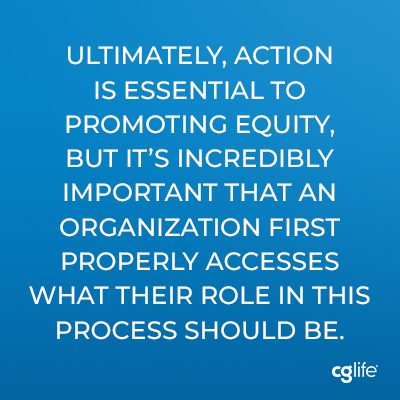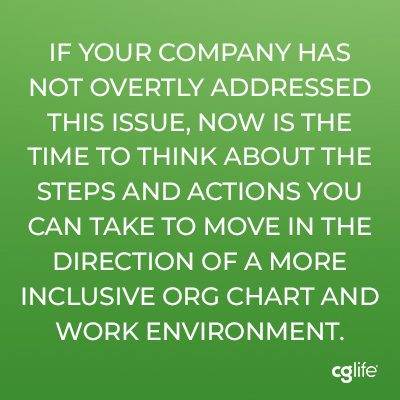The public and corporate outcry for racial equality and sweeping change in the wake of George Floyd’s tragic death has moved the nation. This recent flashpoint has left many individuals and organizations evaluating how to communicate their values thoughtfully and respectfully for the purpose of engaging in the conversation and driving meaningful change.
For some companies, social justice and corporate responsibility efforts are focused on motivating their employees to be the voice of change in their local communities, while for other organizations their beliefs and values are baked into their brand and their communications strategy.

These recent events have left many companies asking questions about what their place in the conversation should be, and rightfully so. As a public relations professional, I have received several calls from current and past clients asking what they should or should not do. While we can appreciate the desire to act and use your communication channels to take a position, at this moment “speaking just to be heard” is not necessarily the answer. Ultimately, action is essential to promoting equity, but it’s incredibly important that an organization first properly assesses what their role in this process should be. In order to do this, it is more appropriate for many organizations to first drastically increase their team’s listening and self-education practices with respect to conversations of race and promoting diversity. The desire to communicate and offer solidarity often comes from the right place, but it can inadvertently distract from other voices that have a more important story to tell. Of course, if your organization has a deeply rooted story, then it is appropriate for you to take a more vocal position, though it is by no means required that you do.
Given that some businesses and organizations may not have clarity on where they should place their efforts, we pulled a few considerations and resources to help your company reflect during this pivotal time.
Listening May Be the Best Response
As marketers, our instinct is to communicate, to post a statement on social media, to draft a blog, but in this case, do you truly understand the depth of the issue? Inequality and institutional racial injustice are centuries-long issues that have not always gotten the attention they deserve. Instead of talking, stop first and listen. Do not make a statement just to make a statement. Listening needs to be step one in understanding the issues and determining how, and if, you communicate your position. If you make a statement without true understanding or transparency, it may not have the outcome you intend. Instead, encourage self-education, create an internal working group to gain feedback and perspective, and engage with diversity and inclusion leaders to learn how your organization can better support this cause.
Acknowledge Your Limitations

Before you take a vocal position, tend to your own garden. Think about the policies, practices, values, and training your organization has in place to ensure equity within leadership and your general workforce. Acknowledge the need to do better and create a strategic plan and initiatives to drive diversity efforts at your organization forward. While many companies have posted #BlackLivesMatter and participated in #blackouttuesday, less may be really looking inwardly and engaging in conversations that will lead to change. Although well-intentioned, the use of these hashtags in solidarity has also drowned out some important information from being widely viewed. Being outwardly quiet during this time is ok. If your company has not overtly addressed this issue, now is the time to think about the steps and actions you can take to move in the direction of a more inclusive org chart and work environment.
Be Authentic and Lead with Action
If your company has a long-standing, proven history of making racial equity central to its values, and your policies give your leadership an authentic position to speak on this issue, then you can take the lead and encourage others to join the dialogue. Presenting a genuine statement gives your company a credible and audible voice in the conversation that directs attention to important steps that you’ve already enacted that others could readily adopt. Share the ways your organization is building awareness, educating employees, and embedding equality into your values. With an authentic, impassioned story that’s grounded in successful action, your company can help amplify change.
The activities of the last several weeks have elevated conversations on race in our homes, in our neighborhoods, and in our places of work. While your organization may not be ready to speak outwardly, there is no better time than the present to start the internal dialogue needed to make diversity, equity, and inclusion central to your core corporate values.
If you are looking for more information, there are a number of resources available to help guide your listening, active learning, and plan development. In the scientific community specifically, there is #ShutDownSTEM, an initiative that organized laboratory shutdown protests on June 10th. On their site, they acknowledge that to correct racial divides in science, you need to acknowledge and understand them first. This site also provides resources to gain a deeper understanding of the situation both for those new to the discussion and those who are well versed. It also provides resources to identify organizations to join or support and provides sharable content. In addition, The Racial Equity Resource Guide provides access to organizations ranging from grassroots groups, academic institutions, and national advocacy organizations that are working towards racial equity. You can also check out the Harvard Business Review’s recent article, Towards a Racially Just Workplace , which provides support for human resources to better understand inclusion in the workplace.
